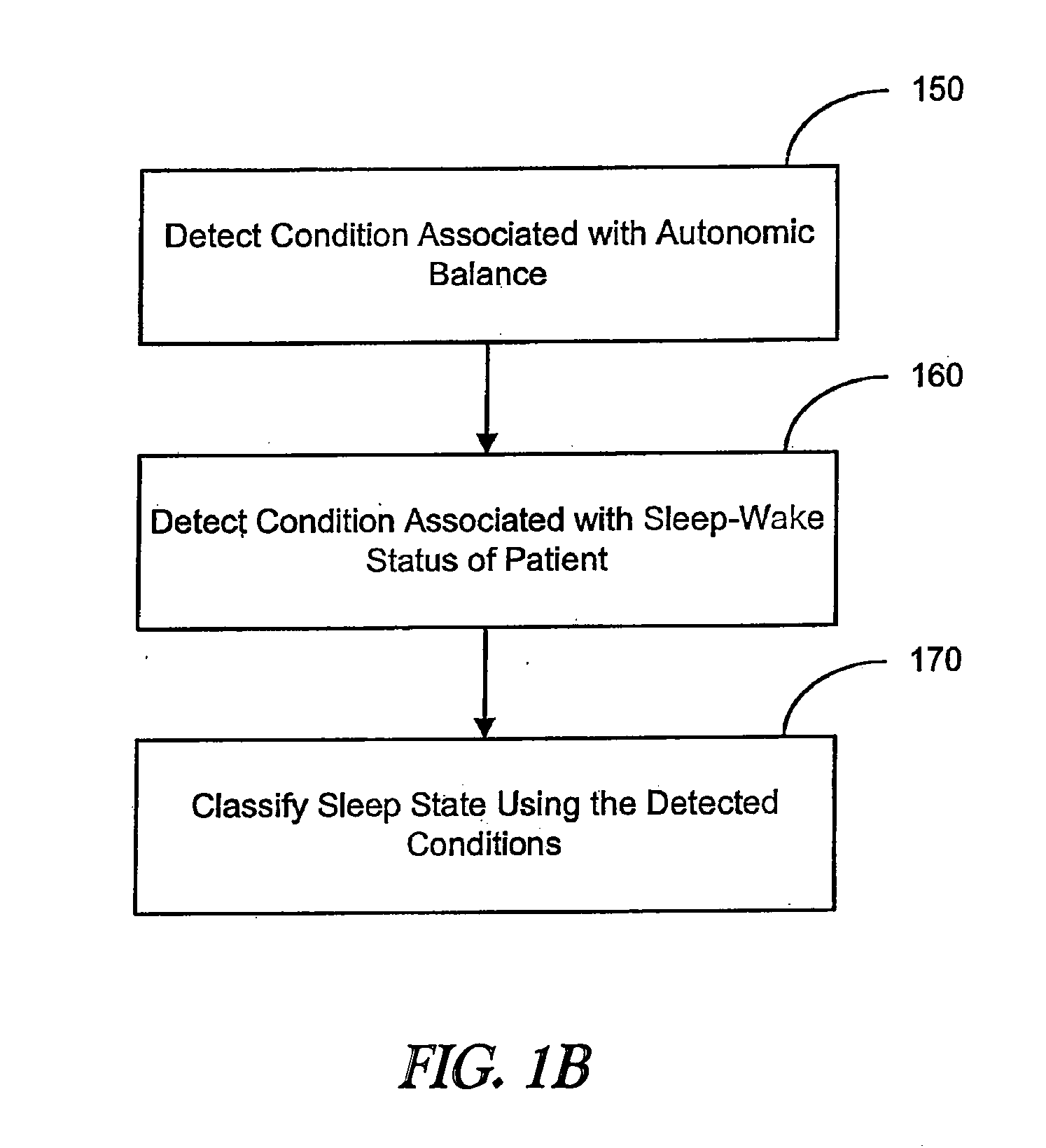Evaluating a patient condition using autonomic balance information in implantable cardiac devices
a technology of autonomic balance and cardiac device, which is applied in the field of patient condition evaluation using autonomic balance information, can solve the problems of autonomic imbalance, cardiac output to fall below a level adequate, and affect the cardiovascular, respiratory and other physiological systems
- Summary
- Abstract
- Description
- Claims
- Application Information
AI Technical Summary
Benefits of technology
Problems solved by technology
Method used
Image
Examples
Embodiment Construction
[0028]In the following description of the illustrated embodiments, references are made to the accompanying drawings that form a part hereof, and in which are shown by way of illustration, various embodiments by which the invention may be practiced. It is to be understood that other embodiments may be utilized, and structural and functional changes may be made without departing from the scope of the present invention.
[0029]Assessment of a patient's condition is enhanced when an understanding the patient's neurohormonal component is combined with other cardiac and / or patient activity information. One measure of the patient's neurohormonal component used to determine autonomic balance may be determined using electrophysiology signals sensed by a patient-implantable medical device (PIMD). For example, an electrocardiogram (ECG) or electrogram (EGM) waveform describes the electrical activity of a patient's heart and may be used to determine autonomic balance, where typically ECG refers t...
PUM
 Login to View More
Login to View More Abstract
Description
Claims
Application Information
 Login to View More
Login to View More - R&D
- Intellectual Property
- Life Sciences
- Materials
- Tech Scout
- Unparalleled Data Quality
- Higher Quality Content
- 60% Fewer Hallucinations
Browse by: Latest US Patents, China's latest patents, Technical Efficacy Thesaurus, Application Domain, Technology Topic, Popular Technical Reports.
© 2025 PatSnap. All rights reserved.Legal|Privacy policy|Modern Slavery Act Transparency Statement|Sitemap|About US| Contact US: help@patsnap.com



